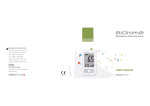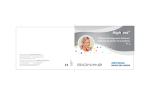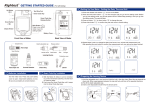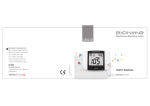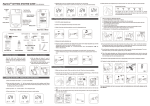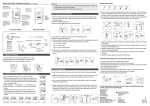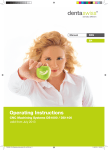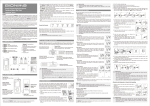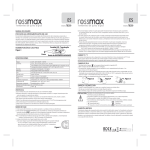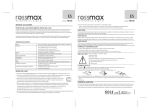Download GS300 Test Strip Insert(AST)-EN(101-3GS300-324)
Transcript
Rightest™ GS300 BLOOD GLUCOSE TEST STRIP INSERT Intended Use The Rightest™ Blood Glucose Monitoring System is used by individuals with diabetes. It's for checking on glucose levels in capillary whole blood (CB) from the fingertip, palm and forearm. It's as an aid in management of diabetes at home and clinical sites. Rightest™ Blood Glucose Test Strips are intended for testing outside the body (in vitro diagnostic use) (For selftesting) only. The Rightest™ System tests the CB and provides results equivalent to a laboratory instrument (plasma equivalent) - The Rightest™ Blood Glucose Test Strip GS300 is designed for use only with the Rightest™ Blood Glucose Meter GM300. - The Rightest™ Blood Glucose Monitoring System includes Meter, Test Strips, Smart Code Key, Check Key, Control Solutions, Lancing Device and Lancets. Test Procedure REFER TO THE Rightest™ USER’S MANUAL FOR MORE DETAILED INFORMATION. Smart Code Key Installation 1) With the Meter off, follow ① and ② direction to put the new Smart Code Key into the track on code key base. 2) Push down the Smart Code Key until it snaps into the Smart Code Key base. Preparing the Lancing Device 1. Pull off the depth adjustable cap. 2. Insert a new disposable lancet firmly into lancet carrier. 3. Twist off and set aside the protective cover of the disposable lancet. 4. Replace the depth adjustable cap. 5. Choose a depth of penetration by rotating the top portion of the depth adjustable cap until the setting depth matches the window. Settings are window. Settings are based on skin type " " for soft or thin skin; " " for average skin; " " for thick or calloused skin. 6. Hold the hub in one hand and pull on the plunger in the other hand. The device will be cocked. Release the plunger, it will automatically move back to its original position near the hub. Performing a Test 1) Wash and dry your hands. Take one strip from the vial. Close the vial cap immediately. 2) Insert the strip into the strip port on meter with the indication symbol facing up. Push the strip in until it snaps and stops. The meter will turn on automatically. 3) Make sure the code number on the meter screen matches the code number on the test strip vial. 4) When you see the flashing blood drop, hold the lancet device to side of your fingertip and press the release button. 5) Gently squeeze your fingertip to get a drop of blood. Our meter only needs a tiny blood sample. Sample Size Example 1.0µL 1.4µL 2.0µL 3.0µL 4.0µL Please take a minimum of 1.4μL to do the test on glucose monitoring system. Blood sample size above 4.0μL might contaminate the Smart Code Key. Alternative site testing-palm or forearm blood sampling - To perform a test using samples obtained from alternative sites, install the clear cap on the lancing device (For more information on how to install, see the Instructions for the lancing device). - To increase the blood flow, massage the puncture area of palm or forearm for a few seconds. - Immediately after massaging the puncture area, press and hold the lancing device with the clear cap against palm or forearm. - Then press the release button. - Continue holding the lancing device against palm or forearm and gradually increase pressure for a few seconds until the blood sample size is sufficient ( Refer to Instructions for the lancing device ) 1 2 Releasing button Pressing for a few seconds 6) Touch and hold the drop to the edge of sample entry until you hear a " beep " and the view window is totally filled with blood. If the view window is not totally filled with blood or the test does not start. Then discard the test strip and repeat the test with a new test strip. 7) You will see the countdown mode on the screen. After 8 seconds, the test result appears. For more information about your test results, please see your User Manual. 8) Pull off the depth adjustable cap. Without touching the used disposable lancet, stick the lancet tip into the protective cover. 9) Hold the release button in one hand and pull on the plunger in the other hand will safely eject the used disposable lancet. 10) Discard the used disposable lancet into an appropriate puncture-proof or biohazard container. 11) Replace the depth adjustable cap after finishing the test. For more information on how to use your meter and understand your test results, see the User Manual. Test Result - Blood glucose test results are shown on the meter as mmol/L or mg/dL, depending on which unit of measurement you have chosen. Consult your doctor before making any changes to your diabetes medication program. - If your blood glucose result is unusually high or low, or if you question your results, repeat the test with a new test strip. You can also run a quality control test with your Rightest™ Check Key and Rightest™ Control Solutions to check your meter and strip. If the test result still remains unusually high or low, contact your doctor immediately. - If you are experiencing symptoms that are not consistent with your blood glucose test results and you have followed all the instructions in this manual, contact your doctor immediately. - The Rightest™ Meter displays results between 0.6 and 33.3 mmol/L or 10 and 600 mg/dL. If your test result is below 0.6 mmol/L ( 10 mg/dL ), " Lo " will appear on the screen. Please repeat your test again with another strip. If you still get a " Lo " result, you should immediately contact your doctor. - If your test result is above 33.3 mmol/L ( 600 mg/dL ), " Hi " will appear on the screen. Please repeat your test again with another strip. If you still get a " Hi " result, you should immediately contact your doctor. (1) Expected values Fasting Blood Glucose GLUCOSE LEVEL INDICATION From 3.9 to 5.5 mmol/L (70 to 99 mg/dL) Normal fasting glucose From 5.6 to 6.9 mmol/L (100 to 125 mg/dL) Impaired fasting glucose (pre-diabetes) 7.0 mmol/L (126 mg/dL) and above on more than one testing occasion Diabetes Precautions - Check the expiration date printed on the package every time you use the strip. Do not use expired test strips. - Close the vial cap immediately after taking test strip out from the vial. - Do not perform quality control test with expired control solution. - Do not bend or twist the test strip. Damage of test strip may cause wrong result. - Do not reuse test strips. - Do not reuse lancets. Discard used lancets properly. - Wait at least 30 minutes to perform a test if you have moved the meter to an area of different temperature. - If you want to purchase a new control solution, please contact your authorized Bionime representative. Warning - Keep the test strips or vial cap away from children. They may cause a choking hazard. If a test strip or vial cap is swallowed, contact your doctor immediately. Limitations - Grossly lipemic ( fatty ) samples may interfere with some methodologies. To be aware of such interferences, patients under the supervision of their doctor should have baseline glucose values established by a clinical laboratory method prior to starting glucose monitoring at home. These baseline values should be checked periodically thereafter. - Meter read capillary blood glucose values may be significantly lower than "true glucose levels" in the hyperglycemic-hyperosmolar state, with or without ketosis. Critically ill patients should not be tested by the Rightest™ System, or tested with extreme caution. - Caution is advised in the interpretation of glucose values below 50 mg/dL or above 250 mg/dL. Consult a doctor as soon as possible if values in this range are obtained. - Doctors should evaluate their technique and their patients' technique at periodic intervals. To accomplish this, it is recommended that BGM results be compared with a concurrently obtained laboratory measurement on the same blood sample. A well characterized clinical laboratory method employing hexokinase or glucose oxidase should be used as the comparative method. - Fluoride should not be used as a preservation for venous specimens when using blood glucose monitors. - Hands and fingers contaminated with sugar from foods or beverages may cause falsely elevated results. - Differences in whole blood and serum/plasma values may cause variability in results. - Storage of strips near bleach as well as bleach containing products will affect results of glucose oxidase strips. - Rightest™ Blood Glucose Test Strips are designed for use with capillary whole blood samples. Do not use serum or plasma samples. - Incorrect test results may be obtained at high altitude more than about 10000 feet (3048 meters) above sea level. - Hematocrits below 30% may cause higher results, and hematocrits above 55% may cause lower results. - Severe dehydration and excessive water loss may cause inaccurately low results. - Rightest™ Blood Glucose Monitoring System has not been validated for use on neonates. Therefore, it should not be used for neonates. - Do not perform the blood glucose test at temperatures below 10℃ (50℉) or above 40℃ (104℉), below 10% or above 90% relative humidity. NOTE - Suggest not to use this meter close to source of strong electromagnetic radiation, to avoid interference with proper operation. - Suggest to keep meter free of dust, water or any liquid. Storage and Handling - Store the strips in the original capped vial at temperatures between 4℃ to 30℃ (39 to 86℉) and relative humidity below 90%. Do not freeze. - Replace the vial cap immediately and close tightly after taking test strip out from the vial. Do not leave the cap of vial opened. If the strip is exposed in the air too long, it will absorb the moisture and cause wrong test result. - Use test strips within 3 months after first opening. Measurement Range The measurement range of the Rightest™ System is 0.6 to 33.3 mmol/L or 10 to 600 mg/dL. Quality Control Section Please refer to the Quality Control section of the User Manual. Troubleshooting and Customer Service For more information on error messages and trouble shooting, please refer to the Error Messages and Trouble Shooting section of the Rightest™ User manual. You may also contact customer service by calling 886 4 24951268 ( 08:30 - 17:30, GMT + 08:00 ). ( At all other times, you could contact your doctor for assistance ) Additional Information for Healthcare Professionals (2) Detection Principle The glucose oxidase and potassium ferrocyanide in the strip react with the glucose in the sample to produce an electrical current which is proportional to the amount of glucose in the sample. The meter measures the current and converts it to the corresponding glucose concentration. Performance Characteristics Precision The precision was evaluated including (i) venous whole blood sample (ii) 3 levels glucose control solution in period of 20 days, by 10 meters and 1 batch of strip. (i) Venous whole blood sample: Meters (1) Total test numbers (n) (2) Mean mmol/L (mg/dL) (3) SD mmol/L (mg/dL) (4) CV (%) P-01 100 2.3 (40.6) 0.08 (1.5) 3.6% P-02 100 5.4 (96.9) 0.14 (2.5) 2.6% P-03 100 6.5 (117.3) 0.14 (2.5) 2.1% P-04 100 10.7 (192.9) 0.22 (3.9) 2.0% P-05 100 19.5 (351.5) 0.35 (6.3) 1.8% (ii) Control solution: Glucose levels (1) Total test numbers (n) (2) Mean mmol/L (mg/dL) (3) SD mmol/L (mg/dL) (4) CV (%) CS-L 100 2.3 (50.5) 0.06 (1.2) 2.5% CS-N 100 5.8 (102.2) 0.11 (2.0) 1.9% CS-H 100 16.7 (302.3) 0.36 (6.6) 2.2% Accuracy The accuracy of the test study of the Rightest™ Blood Glucose Monitoring System was demonstrated by comparing whole blood (plasma equivalent) glucose values on the Rightest™ meter with plasma glucose values on a lab instrument. A total of 176 patients were enrolled. Each patient collected and tested their own blood samples ( from the fingertip, palm and forearm ) using the Rightest™ System. Another blood sample was collected within 5 minutes and got the plasma. Analyze the plasma by the lab instrument. Ninety-seven percent of Rightest™ meter values were within ± 20% of the YSI values at glucose concentrations ≧75 mg/dL and within ±15 mg/dL at glucose concentrations<75 mg/dL. The Results and differences between the two methods, Rightest™ System and YSI 2300 (as the reference method) are proved in the tables below. Table 1: represents samples for glucose results lower than 75 mg/dL. Difference range in values between the YSI value and the Rightest™ meter value The percent ( and number ) of samples for which the difference between the Rightest™ meter value ( Alternative site ) and the YSI value were within the difference range shown in the side row. Fingertip Palm Forearm Within ± 5 mg/dL 82% (23/28) 79% (22/28) 71% (20/28) Within ± 10 mg/dL 93% (26/28) 93% (26/28) 93% (26/28) Within ± 15 mg/dL 96% (27/28) 100% (28/28) 100% (28/28) Table 2: represents samples for glucose results greater than 75 mg/dL. Difference range in values between the YSI value and the Rightest™ meter value The percent ( and number ) of samples for which the difference between the Rightest™ meter value ( Alternative site ) and the YSI value were within the difference range shown in the side row. Fingertip Palm Forearm Within ± 5% 43% (63/148) 48% (70/147) 38% (55/146) Within ± 10% 77% (114/148) 73% (108/147) 77% (113/146) Within ± 15% 91% (135/148) 91% (134/147) 93% (136/146) Within ± 20% 97% (143/148) 97% (143/147) 97% (142/146) * Acceptance criteria in ISO15197 are that 95% of all differences in glucose values should be within ±15 mg/dL for glucose values less than 75 mg/dL, and within ±20% for glucose values greater than 75 mg/dL. Note: When glucose meter results are compared to the laboratory results, difference values below 75 mg/dL are expressed in mg/dL, while those above 75 mg/dL are compared in percent. Interferences The following compounds may interfere with the glucose measurement at the concentrations listed: Uric acid > 0.54 mmol/L (> 9.0 mg/dL) L -Dopa > 0.076 mmol/L (> 1.5 mg/dL) Methyldopa > 0.071 mmol/L (> 1.5 mg/dL) Cholesterol > 6.5 mmol/L (> 250 mg/dL) Reagents Each Blood Glucose Test Strip contains the following reagents: Glucose Oxidase (Aspergillus niger) (GOD) 8.5 % Potassium ferricyanide 48.5 % Non-reactive ingredients 43 % References 1) Diabetes Information - American Association for Clinical Chemistry (AACC)〔Electronic Version〕Retrieved March 24, 2010 from www.labtestsonline.org/understanding/analytes/glucose/test.html 2) In Vitro Diagnostics in Diabetes : Meeting the Challenge. Clinical Chemistry 45:9, 1596-1601 (1999). Lot number For in vitro diagnostic use Manufacturer Use by Store between temperature 4℃ and 30℃ ( 39℉ and 86℉ ) BIONIME CORPORATION 694, Renhua Road, Dali Dist., Taichung City 412, Taiwan Tel: +886 4 24951268 Fax: +886 4 24952568 E-mail: [email protected] http://www.bionime.com Bionime GmbH Tramstrasse 16 9442 Berneck Switzerland LOT 101-3GS300-324 EN IVD




